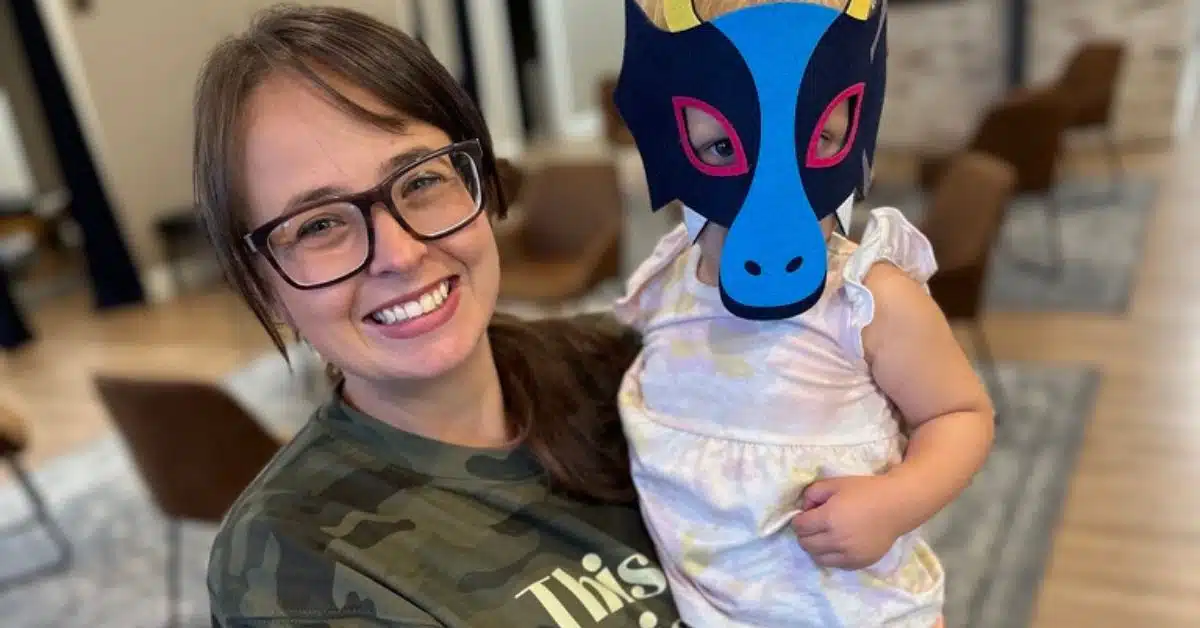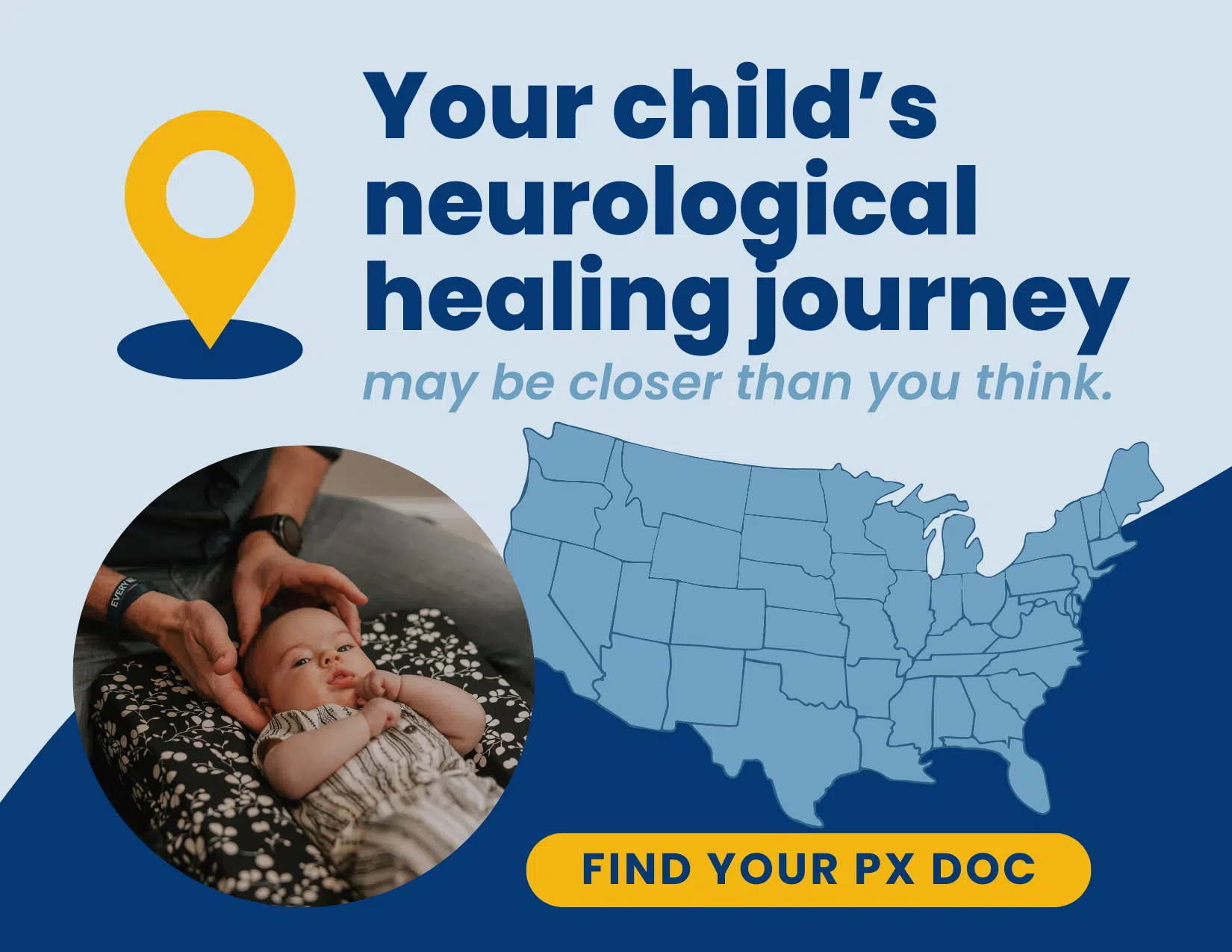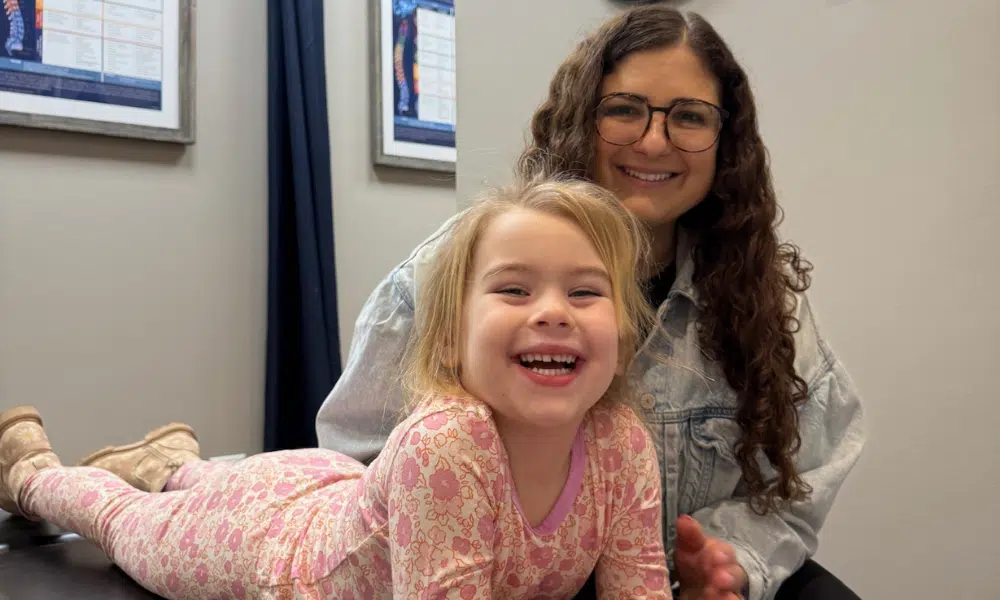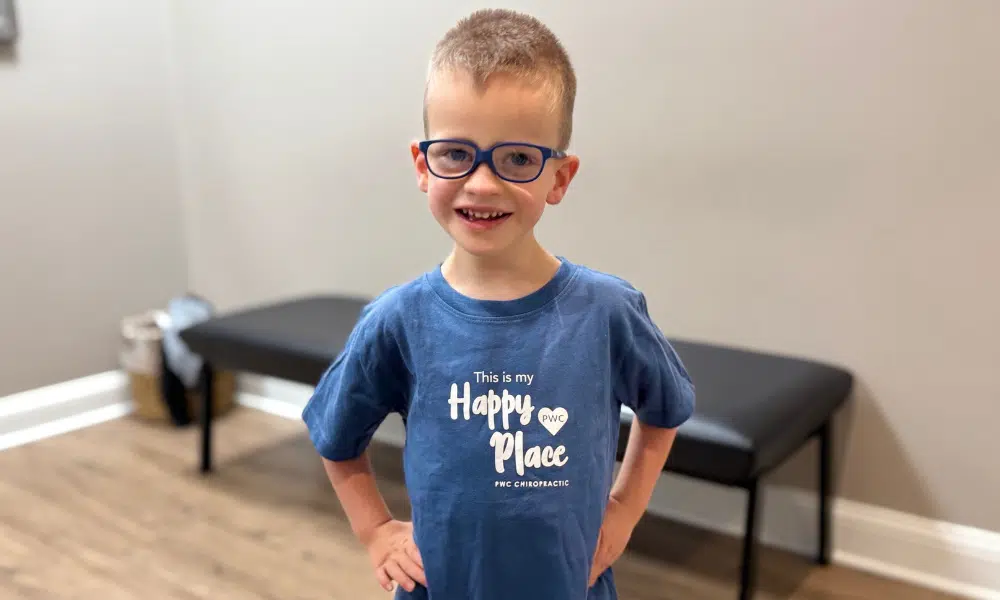Spotting delays or differences in your child’s development can be scary and confusing for any parent. At first, you may even dismiss these early signs or heed the advice of others to “not worry about it.” However, when challenges persist and start impacting daily life, many parents realize something more significant may be going on.
If your child is one of the 1 in 31 children recently diagnosed with Autism Spectrum Disorder, you’re not alone in wondering where to turn for support. While reports of children with communication difficulties, emotional dysregulation, and rigid or repetitive behaviors are on the rise, conventional medicine fails to address the roots of the issue.
However, not all levels of autism look the same.
So, what is level 2 autism? In this article, we’ll gain deeper insight into this specific level, exploring its common signs and underlying causes and the steps you can take to help your child reach their fullest potential. Through Neurologically-Focused Chiropractic Care, answers and support are available.
What is Autism Spectrum Disorder?
Autism Spectrum Disorder (ASD) is a complex neurological and developmental condition. Social communication and interaction differences, restricted interests, repetitive behaviors, and sensory processing issues characterize it.
ASD reflects atypical brain and nervous system development and occurs along a spectrum. This means that the presentations and support needs of those affected vary widely from mild challenges to more severe disabilities.
Most noticeably, people with ASD often face challenges in social interaction, speech and nonverbal skills, sensory regulation, motor control, and displaying restrictive or repetitive behaviors. Often, these signs appear early as missed milestones or developmental delays.
What Is Level 2 Autism?
Autism Spectrum Disorder encompasses a wide range of characteristics and challenges. To categorize this heterogeneity for better treatment planning, the DSM-5 psychiatric manual divides ASD into three support levels.
A level 2 autism diagnosis falls in the middle, indicating a child requires “substantial support” for communication, social interaction, behavior, and coping skills. It is considered moderate autism, and parents frequently report struggling more as school demands and social nuances intensify.
The diagnostic process involves developmental screening followed by formal diagnostic testing, such as ADOS-2 assessments. Criteria help designate one of the three levels of autism outlined in DSM-5.
However, each child develops uniquely, and labels often fail to capture strengths, challenges outside core areas, fluctuating skills, and diversity in support needs. Still, level 2 indicates therapists should provide extra assistance for daily living issues.
How Is Level 2 Autism Diagnosed?
Recognizing autism early and obtaining an accurate diagnosis opens the door to support and intervention. The diagnostic process typically unfolds in two phases: developmental screening and comprehensive evaluation.
Developmental Screening
Healthcare providers screen children for developmental delays and autism during routine wellness visits, typically at 18-month and 24-month checkups. Screening tools like the M-CHAT (Modified Checklist for Autism in Toddlers) help identify children who may need further evaluation.
Parents play a crucial role in this process. You know your child best, and your observations about missed developmental milestones—like not pointing to share interest by 18 months or not engaging in pretend play by age 4—provide valuable information to healthcare providers.
Comprehensive Diagnostic Evaluation
If screening suggests autism, a thorough diagnostic evaluation follows. Developmental pediatricians, psychologists, or neurologists conduct detailed assessments using tools like:
- ADOS-2 (Autism Diagnostic Observation Schedule): Structured observations of social communication and play
- ADI-R (Autism Diagnostic Interview-Revised): In-depth parent interview about developmental history
- Cognitive and language testing: Evaluates intellectual abilities and communication skills
The evaluation examines whether a child meets DSM-5 diagnostic criteria, including persistent challenges in social communication across multiple settings and restricted, repetitive patterns of behavior that cause clinically significant impairment.
The Missing Piece
While these assessments identify behavioral traits, they often miss the underlying neurological dysfunction. At PX Docs, we use INSiGHT neurological scans to detect subluxation and nervous system stress that conventional testing overlooks, revealing the root cause behind the traits that define Level 2 autism.
Level 2 Autism: Understanding Severity Differences
The three-level system helps families and providers understand the degree of support a child needs. Here’s how Level 2 compares to other levels:
Level 1 Autism: Requiring Support
Children with Level 1 autism can often function in mainstream settings with some accommodations. They may struggle to initiate social interactions and have difficulty switching between activities, but their challenges are less pronounced. Think of it as needing a helping hand rather than constant guidance.
Level 2 Autism: Requiring Substantial Support
Level 2 falls in the middle. Children at this level display more noticeable difficulties with social communication—they may speak in short sentences, struggle to maintain conversations, or respond inappropriately in social situations. Their restricted interests and repetitive behaviors are more obvious to others, and they experience marked distress when routines change. They need more than occasional support; they require consistent, substantial assistance throughout their day.
Level 3 Autism: Requiring Very Substantial Support
Level 3 represents the most significant challenges. Children may be minimally verbal or nonverbal, with severe deficits in social communication. Repetitive behaviors significantly interfere with functioning in all areas. These children need intensive, ongoing support for most daily activities.
Support Levels Can Change
Here’s something important: support levels aren’t permanent labels. With appropriate intervention—including Neurologically-Focused care that addresses root nervous system dysfunction—many children’s support needs decrease over time. What starts as Level 2 can shift as the child develops better regulation, communication skills, and adaptive abilities.
Regardless of support level, the underlying issue often remains nervous system dysfunction. Our approach addresses this root cause rather than simply managing the behavioral traits that define each level.
Common Traits in Level 2 Autism
While all children with ASD are unique, level 2 has some defining features that make daily life markedly challenging in multiple settings without substantial support. Core issues center around communication, social interaction, behavior, and coping:
Communication Challenges
- Limited vocabulary or phrase speech
- Poor back-and-forth conversational abilities
- Difficulty initiating communication
- Echolalia or repetitive speech patterns
Social Interaction Issues
- Struggles to read facial expressions and body language
- Frequently perceived as awkward or odd by peers
- Limited interests and play skills
- Problems making age-appropriate friends
Behavioral and Emotional Dysregulation
- Trouble identifying one’s own and others’ emotions
- Extreme reactions to changes in routine
- Frequent tantrums, emotional meltdowns
- Aggressive or self-injurious behaviors
Cognitive Rigidity and Repetitiveness
- Insistence on sameness and rituals
- Intense special interests or fixations
- Repetitive motor mannerisms
- Difficulty with transitions or shifting focus
In addition to these signs, parents may also notice sensory sensitivities, sleep issues, clumsiness, and chronic health problems like gastrointestinal distress.
Level 2 Autism: Understanding “The Perfect Storm” of Causes
While genetics may confer a vulnerability to autism, research now recognizes that a cascade of environmental triggers can also predispose an immature nervous system. We refer to this cascade of environmental stressors that can alter neural connectivity and disrupt healthy nervous system maturation as “The Perfect Storm.”
Some of these environmental triggers include:
Prenatal Maternal Stress and Infection
- Stress hormones and inflammation impact fetal brain development
- Alters neuroendocrine systems closely tied to ASD risk
Birth Trauma
- Interventions like C-sections, induction, and vacuum or forceps extraction can injure delicate nerve pathways, resulting in birth trauma
- Cranial disturbances and spinal tension patterns (subluxation—a combination of restricted movement and neurological interference) affect nervous system communication
Frequent Antibiotics and Ear Infections
- Disrupt healthy gut flora essential for immune function and neurotransmitters
- Gut-brain axis issues create downstream effects
Toxins, Poor Diet, and Sleep Disruption
- Chemical exposures trigger oxidative stress and inflammation
- Nutrient deficiencies and sleep issues also alter brain function
This cumulative burden of external triggers taxes growing bodies and minds, sparking a neurological “brain fire” marked by sensory overload, behavioral struggles, and developmental delays over time. The conventional approach fails to address this root cause.
By understanding this complex combination of triggers, parents can gain greater insight into ASD’s roots. This contrasts with the outdated, solely genetic explanation offered by conventional medicine.
Beyond Medication: Restoring Nervous System Order
Mainstream medicine often takes a cookie-cutter approach to most diagnoses, including level 2 autism. Typically, the conventional approach involves:
- Labeling based on observable behavioral traits
- Prescribing psychiatric medications intended to “manage” the signs
- Recommending standard therapies like speech, occupational, and ABA therapy to work around vs. resolve issues
While this approach does offer some short-term relief, it doesn’t address the true neurological origins of sensory, social, speech, and coordination challenges faced by children with autism.
Fortunately, research links autism with neurological dysfunction, calling for a more Neurologically-Focused care plan to reignite key neural networks.
Therefore, to effectively help children reach their potential, it’s essential to address roots like:
- Cranial disturbances and tension patterns affecting nervous system communication
- Dysautonomia marked by sympathetic system overload and vagus nerve suppression
- Neuroinflammation, immune disturbances, and neurotransmitter imbalances
Through advanced assessment, specialized chiropractors detect subluxation and nerve system dysfunction missed by standard testing. Gentle adjustments restore alignment and reduce neurological stress. Targeted nutrition, diet changes, movement therapies, and environmental accommodations provide additional support.
As the nervous system becomes more balanced, many parents report improvements in sensory processing, behavioral regulation, sleep quality, focus, and digestive function—addressing upstream factors perpetuating outward ASD signs. This empowers greater independence on the child’s unique journey.
Early Intervention and Evidence-Based Therapies
Early intervention makes a significant difference for children with Level 2 autism. Research shows that starting support services before age 2, when the brain is most adaptable, leads to the best long-term outcomes.
Common therapeutic approaches include:
- Applied Behavior Analysis (ABA): A systematic approach to teaching new skills and reducing challenging behaviors through positive reinforcement
- Speech Therapy: Helps children develop communication skills, understand nonverbal cues, and engage in conversations
- Occupational Therapy: Addresses daily living skills, sensory processing challenges, and fine motor development
- Physical Therapy: Improves gross motor skills, coordination, and body awareness
These therapies provide essential skill-building and are valuable parts of a comprehensive support plan. However, they work from the outside-in, teaching the brain new behaviors and skills. Neurologically-Focused Chiropractic Care works inside-out, removing interference so the nervous system can function optimally. When the nervous system regulates properly, these therapies often become more effective because the child’s brain can better receive and integrate what they’re learning.
Neurologically-Focused Chiropractic Care and Autism
Chiropractic care offers a unique, drug-free approach to helping children reach their potential, especially those struggling with developmental or neurological situations like autism.
While traditional chiropractic focuses on the spine for pain relief and mobility, newer specialized techniques like Neurologically-Focused Chiropractic Care bring deeper neurological assessment and precision in correcting underlying dysfunction.
Advanced technologies detect and analyze interference within the nervous system, called subluxations. Gentle “Neuro-Tonal” adjustments are tailored to each child, stimulating key nerves and allowing for better sensory processing, behavioral regulation, speech abilities, and more.
Children often progress faster in therapies and daily skills as the nervous system becomes more balanced. Care also helps set the stage for enhanced function into adulthood by nurturing optimal development.
Supporting Your Child and Family
Getting an autism diagnosis often leaves parents feeling overwhelmed and filled with questions about the road ahead. Know that hope and help exist. Small, consistent steps that make life easier can aid development. Here are tips for parents with a level 2 child:
At Home
- Incorporate visual schedules and timers
- Create sensory-friendly spaces for regulation
- Add labels and charts to build routine independence
- Prepare social stories previewing new experiences
In Education
- Access developmental preschool programs with higher staffing ratios
- Request an aide, resource room time, and therapy incorporations
- Partner closely with teachers on accommodations
- Teach self-regulation and social thinking concepts
With Friends and Family
- Find an understanding and supportive community
- Advocate for your child’s needs around others
- Explain differences in communication, play, and behavior
- Encourage relationships, valuing their uniqueness
For Parents
- Prioritize bonding through special interest activities
- Exchange ideas with other special needs parents
- Stay educated through reputable autism resources
- Make self-care a regular commitment
No one knows your child like you do. Trust your instincts, advocating for their best care. Explore emerging research on natural solutions addressing root factors for fuller restoration. Brighter days ahead start with the next step.
Next Steps to Help Your Child Thrive
Ultimately, learning that your child has level 2 autism can feel overwhelming but also liberating. You now have a name for the challenges you’ve noticed, and education empowers you to get appropriate assistance.
Of course, there is no overnight miracle care plan for level 2 autism; each child progresses on their own timeline. But regularly addressing root issues while embracing neurodiversity can open a world of possibilities. Have hope and stand firmly by your child each step of the way.
At PX Docs, we’re dedicated to providing safe, effective, and drug-free support. Grounded in compassion, we strive to give families and providers alike a refreshed perspective on Autism Spectrum Disorder.
To help your child thrive, we encourage you to visit our PX Docs Directory to find a PX Doc near you. Our qualified, cause-based care chiropractors can help your child reach their fullest potential.





